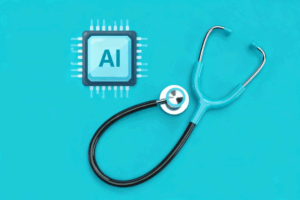At the Parsemus Foundation, we’re dedicated to bringing you news about low-cost, non-invasive health innovations that can make a real difference in people’s lives. Today, we’re spotlighting an exciting development in the treatment of aortic stenosis — a condition that affects millions of people worldwide, especially older adults. This new non-invasive heart valve therapy could be a game-changer.
What is aortic stenosis?
Aortic stenosis occurs when calcium deposits build up on the heart’s aortic valve, making it harder for blood to flow. This condition can cause serious symptoms like fatigue, chest pain, and heart failure. The prevalence of aortic stenosis increases with age and is more common in men than women. Other risk factors include high cholesterol, high blood pressure, and using tobacco products.
A calcified aortic valve before and after ultrasound therapy. Image courtesy of Cardiawave.
How the device works
Cardiawave, a French medtech company, has developed an innovative device called Valvosoft®. This device uses focused ultrasound waves to modify the calcium structure in the leaflets of the aortic valve. The therapy is delivered for up to 70 minutes per patient per procedure in an outpatient setting, while the patient is awake or lightly sedated.
This process improves blood flow without damaging healthy tissue. It’s a promising step toward non-invasive heart valve therapy that could benefit many patients.
The Valvosoft® device, which uses focused ultrasound waves to modify the calcium structure in the leaflets of the aortic valve. Image courtesy of Cardiawave.
Promising clinical results
The latest results from Valvosoft’s clinical studies are very encouraging. In a pivotal study, doctors treated 60 patients at 11 European centers. Six months after treatment, 80.5% of patients saw their heart failure symptoms improve or stay stable. Importantly, there were no strokes, and 91.7% of patients avoided major heart problems within the first 30 days.
At the one-year mark, results remained positive. The average aortic valve area (AVA) — a key measure of how well the valve works — increased by 43% compared to what doctors would expect without treatment. Patients also reported better quality of life, with a 9-point increase on the Kansas City Cardiomyopathy Questionnaire.
A non-invasive alternative for older adults
Cardiawave’s technology offers patients a non-invasive heart valve therapy that’s safe and repeatable. Unlike surgery, which can be risky for older or frail patients, this therapy avoids incisions and anesthesia. That’s a big deal, since aortic stenosis is common among people over 75.
Expert praise and future steps
Professor Hélène Eltchaninoff, a leading cardiologist in France, praised the therapy. She said the device shows real promise for patients who can’t — or don’t want to — undergo current valve replacement techniques. She also noted that the therapy might even help patients prepare for transcatheter aortic valve implantation (TAVI), another less-invasive procedure.
This therapy is still under investigation and not yet approved for commercial use. But Cardiawave is moving forward with regulatory steps in Europe and the United States. They aim to bring Valvosoft to market soon, giving doctors and patients more choices in treating this serious condition.
The Parsemus Foundation believes that non-invasive heart valve therapy could transform the way we treat aortic stenosis.
See our other news articles on human health topics.


